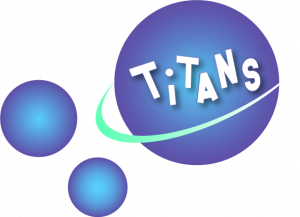
The second TRANSAT Tritium School held virtually on 14-18 June 2021 was a success with over 369 participants in attendance.
The Tritium School aimed to educate people about tritium and all of the related aspects, from its birth to its decay, and to gather experts in the field of fusion, fission and biology from around the world to share knowledge and discuss tritium handling, releases and possible hazards of tritium for the environment.
Each day of the School was dedicated to several specific topics divided into different sessions and began with lectures from invited speakers who introduced the topic and state-of-the-art research in the field. Talks following the introduction explored the field in greater depth.
The following topics were covered:
- General fission and fusion – tritium (tritium migration, management, transport, detection, dust, JET activities)
- Tritium waste
- Radiotoxicity/ecotoxicity
- Epidemiology of tritium
- Tritium dosimetry
A summary of each day can be found below.
The first day was dedicated to tritium migration and management. Attendees learned about tritium migration and management in fission and fusion devices. The day started with an excellent talk about the fundamentals of tritium handling and continued on the hydrogen and tritium transfer cycles in fission and fusion devices. There was one talk also devoted only to tritium in ITER. The day ended with a talk on dust in fusion reactors. 272 people attended on the first day.
The second day focused on tritium migration, transport, detection and waste. The first session of the day dealt with plasma wall interaction, how this influences tritium retention in fusion materials and how it can be modelled to predict tritium inventory. In the second session different tritium detection techniques were presented and one talk was especially devoted to detection of tritium in Joint European Torus (JET) providing an excellent overview of the detection techniques and their capabilities and detection limitations. Last session was devoted to JET preparation on DT campaign and waste management in JET. On the second day there were 235 people in attendance.
The third day addressed tritium migration, management and waste. In the first session there were two excellent talks, one about tritium processing in breeding blankets in fusion reactor and another on radioactive dust from a safety perspective. The second session was devoted to tritium waste and decommission procedures which have become more and more relevant for fission and fusion devices. The last session was devoted to breeding blankets in DEMO and tritium permeation barriers, which are both very important aspects for running future fusion devices like DEMO. There were 206 people in attendance on the third day.
The fourth day was devoted to radiotoxicity, ecotoxicity, the epidemiology of tritium and its dosimetry. In the first session there were two talks that gave an overview of human and ecosystem responses to tritium. The second session addressed epidemiological and ecotoxicological studies on tritium. The last talk of the day was devoted to the dosimetry of tritium on human and non-human biota. 156 people participated on the fourth day.
The fifth and final day dealt with radiotoxicity, dosimetry of tritium and waste management. In the first session, attendees learned about the influence of tritium on aquatic environments and about modelling approaches for tritium dosimetry at the sub-cellular scale. The last talk of the tritium school was delivered by the French National Agency for Radioactive Waste (ANDRA) where a broad overview about the waste management in France was presented with a focus on how the quantity of tritiated waste can be stored based on its material activity. On the last day, 131 people joined the school virtually.
It is vital to educate young generations on tritium as ITER approaches and the new generation of fission reactors is deployed, and the organising committee hopes that a continuation of the Tritium School will take place in the years to come.

